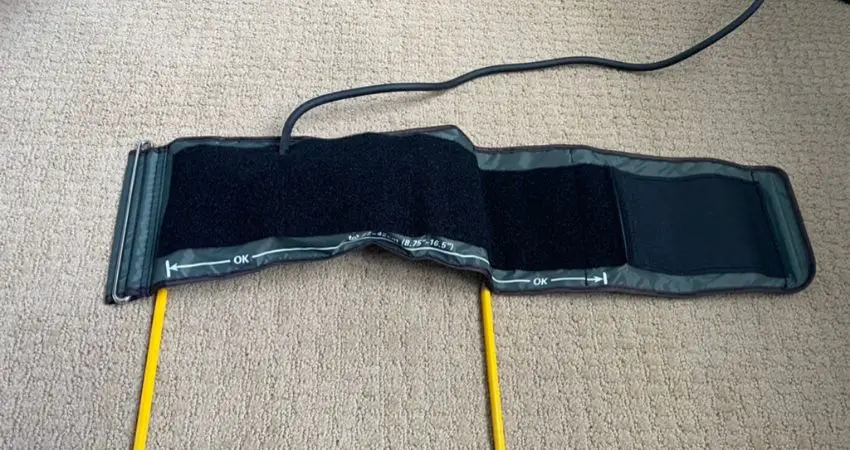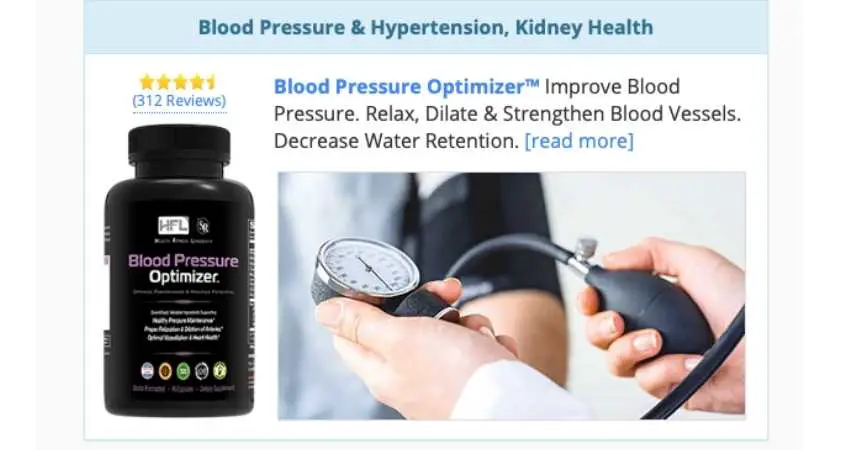Do you take all the appropriate steps when preparing to measure your BP? If so, that’s great but if your blood pressure bladder is not the correct size, there’s a decent chance your reading will be inaccurate. This may lead you to question, what is the correct blood pressure bladder length?
The correct blood pressure bladder length should be between 75%-100% of the circumference of the upper arm as per the American Heart Association. If the bladder length is too short or long the BP measurement can be inaccurate. A bladder length too long can cause a lower reading and a bladder length too short can cause a higher reading.
This blog post will inform you how the readings can be inaccurate. In addition, it’s significant not to confuse the bladder size with the cuff size. The two are different, and it’s crucial not to employ one of the measurements for the other.
BP Tip: Always check the size range of a blood pressure cuff and compare it to your arm size prior to ordering. In addition, purchase a monitor which allows the cuff to be changed. The monitor I use and recommend allows it. This is extremely important for two people who may have different arm sizes. Check the current price on Amazon for the one I use, Welch Allyn 1700 Series.
Disclaimer: Some of links in this article are affiliate links which means I may earn a small commission at no extra cost to you. As an Amazon associate I earn from qualifying purchases.
( Lower Your BP Naturally, In Only 30 Days Or Pay Nothing…Visit Website By Clicking Here Or Photo Above )
Blood Pressure Cuff Bladder Length
The length of the bladder should be no less than 75% of the circumference of your upper arm measurement ((Hypertension: Measurement of Blood Pressure in Humans: A Scientific Statement From the American Heart Association)). For example, if your upper arm measures 15″, the length of the bladder should be no less than 11.25″. Ideally, it should fall in the range of 11.25″-15″ (75%-100% of your upper arm measurement).
The following table indicates different BP cuff sizes, related arm circumference and cuff bladder dimensions.
| Cuff Size | Arm Circumference – cm. Arm Circumference – in. | Bladder Size (W x L) – cm. Bladder Size (W x L) – in. |
| Small Adult | 22 – 26 cm 8.66 – 10.23″ | 12 x 22 cm 4.72 x 8.66″ |
| Adult | 27 – 34 cm 10.62 – 13.38″ | 16 x 30 cm 6.29 x 11.81″ |
| Large Adult | 35 – 44 cm 13.77 – 17.32″ | 16 x 36 cm 6.29 x 14.17″ |
| Extra-Large Adult | 45 – 52 cm 17.71 – 20.47″ | 16 x 42 cm 6.29 x 16.53″ |
Blood pressure cuff bladder length is one of 14 sections in my article about blood pressure cuffs. Learn more about BP cuffs, including how to apply them, errors made and sizes, here in the article, Blood Pressure Cuffs.
Don’t Confuse the Bladder With Cuff Size
The cuff is the material that you see and wrap around your arm. The cuff has the velcro and instructional writing on it. The bladder is inside the cuff and is what actually inflates when you press the start button to measure your pressure. You cannot see the bladder as its sewn inside the cuff material.
The bladder length and the length of the cuff are two different items and measurements. The cuff I use at home is approximately 23″ long but the bladder length is much shorter, approximately 13″.
In addition the cuff has a size range printed on the material that informs you of what size arm the cuff is manufactured for. The arm size range on my cuff is 8.75″-16.5″.
Now that I totally confused you, the arm size range printed on the cuff is what most people use when choosing a BP cuff. Typically, if your upper arm circumference falls in the size range of the cuff, the bladder is the correct length for you and not too long ((Hypertension: Measurement of Blood Pressure in Humans: A Scientific Statement From the American Heart Association)).
The manufacturer of the cuff typically prints the arm size range the cuff is manufactured for and doesn’t include the bladder size or the total cuff length. Therefore, the arm size range listed on the cuff is what you’ll be concerned about.

What Happens If the Cuff Bladder is Too Long?
If the blood pressure cuff bladder length is too long, your BP measurement will be falsely lower. The larger bladder or overlapping bladder will squeeze your upper arm more and close off the blood supply in your vessels faster. This results in a lower reading ((National Center for Biotechnology Information: Blood pressure measurement)).
In a study that involved measuring the blood pressure of over 100 patients, different cuff sizes were used. When they used a cuff or bladder too long, systolic blood pressure decreased 5 mmHg1.
What Happens If the Cuff Bladder is Too Small?
If the blood pressure cuff bladder length is too small, your BP measurement will be falsely higher2. The bladder doesn’t wrap around and cover the percentage of the upper arm as it should.
This takes a longer time and more inflation of the cuff for the blood supply to cut off resulting in a higher reading.
In a study that researched the effect of blood pressure cuff positioning, one of the things they used was cuffs too small. With a smaller sized cuff and bladder, systolic increased by 4.9 mmHg and diastolic by 4.0 mmHg ((Journal of Hypertension: Impact of cuff positioning on blood pressure measurement accuracy: may a specially designed cuff make a difference?)).
( Click Get A Quote Above or Visit Website Here )
How To Measure Your Upper Arm
Without obtaining the correct upper arm circumference, you won’t be able to decide which size cuff you’ll need. To obtain your upper arm circumference properly, follow these steps:
- Use a cloth measuring tape.
- Keep your arm straight down at your side and relaxed.
- Do not flex your arm or “make a muscle.”
- Wrap the measuring tape around your arm firmly but not too tight.
- Keep the measuring tape even all around and note how many inches.
- If you have difficulty doing it yourself, seek the help of a family member or friend.
To avoid a bladder length too long or short, compare the measurement to the arm size range the cuff is made for prior to purchasing a monitor. If you already have a monitor and need to change the cuff because it’s too long or short, you can buy new cuffs online made for your machine.
They have a variety listed on Amazon for the more popular monitors which you can check out right here, BP cuffs.
Read Next – More BP Cuff Articles!
Can A Blood Pressure Cuff Be Too Tight?
Blood Pressure Cuff Bladder Width
